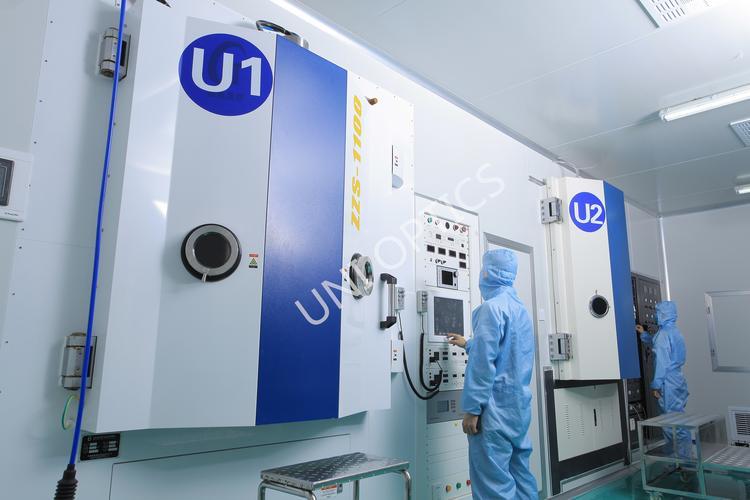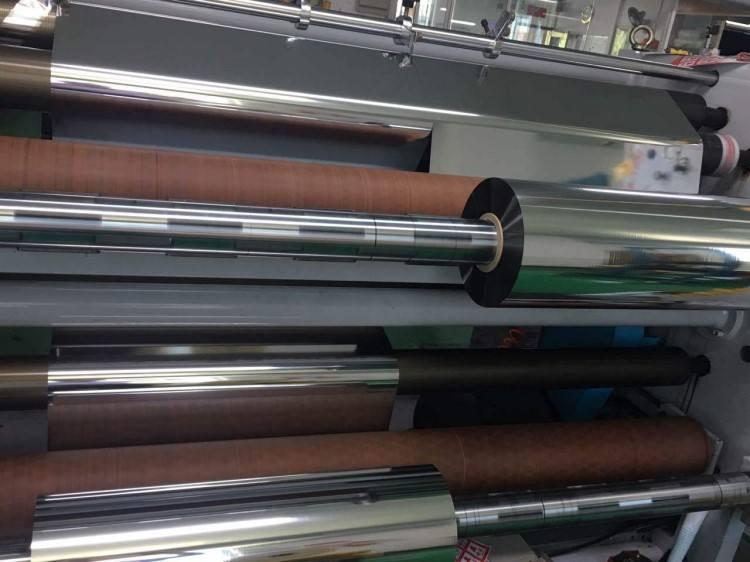Optical Coating
An optical coating is a thin layer or layers of material deposited on an optical element, such as a lens or mirror, that changes the way the optical element reflects and transmits light. One type of optical coating is an anti-reflective coating, which reduces unwanted reflections from surfaces, commonly used on eyeglasses and camera lenses. Another type is a highly reflective coating, which can be used to produce mirrors that reflect more than 99.99% of light. More complex optical coatings exhibiting higher reflectance at certain wavelengths and antireflection at longer ranges allow the production of dichroic thin-film filters.
Coating Type
Reflection vs. Wavelength Curves at Normal Incidence for Aluminum (Al), Silver (Ag), and Gold (Au) Metal Mirrors
The simplest optical coatings are thin metal layers, such as aluminum, that are deposited on a glass substrate to form the glass surface, a process called silvering. The metal used determines the mirror's reflective properties; aluminum is the cheapest and most common coating, yielding approximately 88%–92% reflectance in the visible spectrum. More expensive is silver, which has 95%–99% reflectance even in the far infrared, but has reduced reflectance (<90%) in the blue and ultraviolet spectral regions. The most expensive is gold, which is full infrared. Offers excellent (98%–99%) reflectance, but limited reflectance at wavelengths less than 550 nm, resulting in a distinctive golden color.
By controlling the thickness and density of the metal coating, reflectivity can be reduced and surface transmittance increased, resulting in a half-silver mirror. These are sometimes used as "one-way mirrors".
Another major type of optical coating is the dielectric coating (that is, the use of materials with different refractive indices as the substrate). They consist of thin layers of materials, such as magnesium fluoride, calcium fluoride, and various metal oxides, which are deposited on optical substrates. By carefully choosing the precise composition, thickness and number of these layers, the reflectivity and transmittance of the coating can be tuned to produce virtually any desired property. The reflection coefficient of the surface can be reduced below 0.2%, resulting in an anti-reflective (AR) coating. In contrast, with high-reflection (HR) coatings, the reflectivity can be increased to more than 99.99%. The level of reflectivity can also be adjusted to a specific value, for example, to produce a mirror that reflects 90% in certain wavelength ranges and transmits 10% of the light that falls on it. Such mirrors are commonly used as output couplers in beam splitters and lasers. Alternatively, the coating can be designed so that the mirror reflects only a narrow band of wavelengths, creating an optical filter.
The versatility of dielectric coatings has led to their use in many scientific optical instruments such as lasers, optical microscopes, refractor telescopes, and interferometers, as well as consumer devices such as binoculars, eyeglasses, and photographic lenses.
Dielectric layers are sometimes applied over metal films to provide a protective layer (such as silicon dioxide on aluminum), or to increase the reflectivity of the metal film. Metal and dielectric combinations are also used to create advanced coatings that cannot be produced any other way. An example is the so-called "perfect mirror", which exhibits high (but imperfect) reflection with unusually low sensitivity to wavelength, angle, and polarization.
Post time: Nov-07-2022


